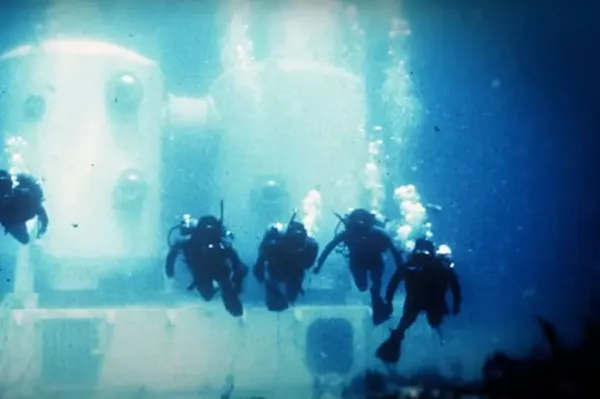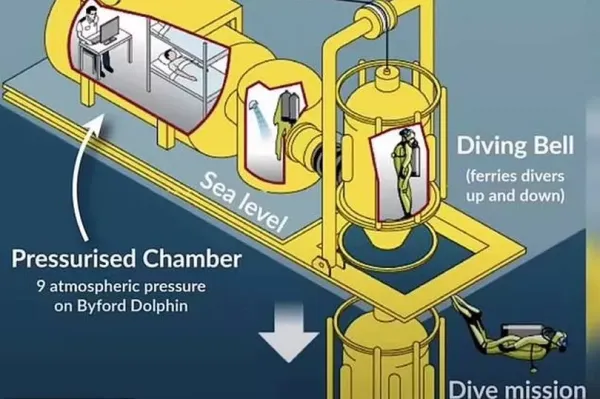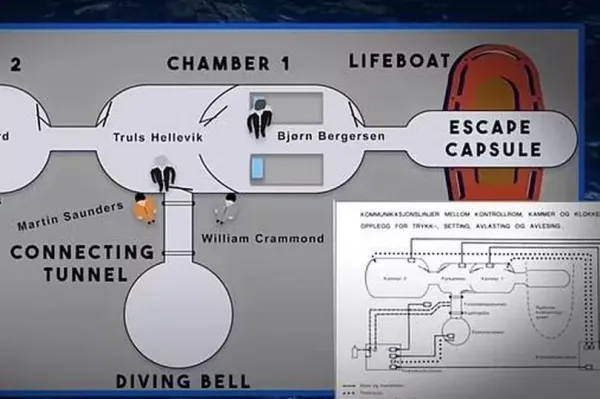A horrifying incident on the Byford Dolphin oil rig on 5 November 1983 resulted in the instant death of five workers, while a sixth narrowly escaped with life-altering injuries. The crew were carrying out routine maintenance work at the time, as detailed in a video that has now garnered over 5 million views.
The video explains how the men met their tragic end on the North Sea oil rig near Norway when a sudden pressure shift wreaked havoc on their bodies. Roy Lucas, 38, Edwin Coward, 36, Truls Hellevik, 34, Bjorn Giaever, 29, William Crammond, 33, and Martin Saunders, 30, were all on duty on the rig when disaster struck.
The intense pressure caused three of the men's bodies to disintegrate into countless fragments, while another was crushed to death. The final casualty of the accident was sucked through a small opening, causing his organs to be expelled from his body.
READ MORE:
READ MORE:
The diving team had descended to a depth of 295 feet to carry out their work, using a specialised transport vessel known as a diving bell.
This diving bell was linked to a set of chambers where divers temporarily resided, allowing them to transition from the high-pressure underwater environment to pressurised living quarters. As humans descend deeper underwater, the pressure increases, reports .

However, the primary risk is not from descending further into the depths, but rather from ascending from below.
Ascending towards the surface causes nitrogen and helium to dissolve into divers' bloodstream, which can be perilously dangerous. That's why in the chambers, divers inhale a specific blend of gases - usually helium and oxygen, adjusted according to the dive's depth.
If divers resurface too swiftly, the sudden pressure drop triggers decompression sickness.
This condition transforms the dissolved nitrogen in the bloodstream back into gas, creating nitrogen bubbles throughout the body. Symptoms can include nausea, joint pain, and dizziness.
In severe cases, it can even prove fatal. The only safeguard is a slow and careful ascent to allow the nitrogen to naturally diffuse.
The diving team were due to spend up to 28 days in the confined high-pressure chamber where they worked, ate, and slept together. On the day of the dreadful incident, Hellevik and Giaever had just finished a 12-hour maintenance shift at a depth of 295 feet, as reported by the Daily Mail.

After their stint, the team ascended back to the surface using the diving bell, which was then expected to be reconnected to the diving chambers. The diving tenders, who managed the air supply for the maintenance crew, had also been on duty for 12 hours at that point.
Once inside from the diving bell, the two divers shut the door and adjusted the chamber's pressure to ensure a tight seal. Typically, they would then isolate the chamber and link it to the dive bell, which would gradually depressurise for diver safety.
However, on this fateful day, one of the external divers unlatched the bell prematurely before full depressurisation. This unsecured clamp caused the chamber system to abruptly switch from the pressure at 297 feet underwater to surface air pressure.
The sudden gush of air exiting the chamber propelled the diving bell violently, striking Crammond and killing him instantly, while leaving Saunders partially crushed under the 4000 kg object. Saunders' lungs collapsed, he sustained back fractures and a broken neck, but he was the sole survivor on board.

The other divers met a far grimmer fate as the pressure ripped through the living chamber, yanking Hellaevik off his feet and causing instant death for those inside, as reported by YouTube channel Storified.
The three divers Lucus, Coward and Giaever - who were resting before their shift - died instantly. According to Storified, the abrupt pressure change caused dissolved nitrogen to revert to a gas state before solidifying in their arteries, veins, hearts and other organs.
The aftermath saw their body parts strewn across the chamber.
Hellevik endured the most horrific death as he was nearest to the partially open connecting door. He was propelled through a 24-inch (60.9 cm) gap with a force of 25 tons, causing his organs to explode out of his body.
The incident remains a mystery as its exact cause is still unclear, but it highlighted the urgent need for improvements in diving safety.









